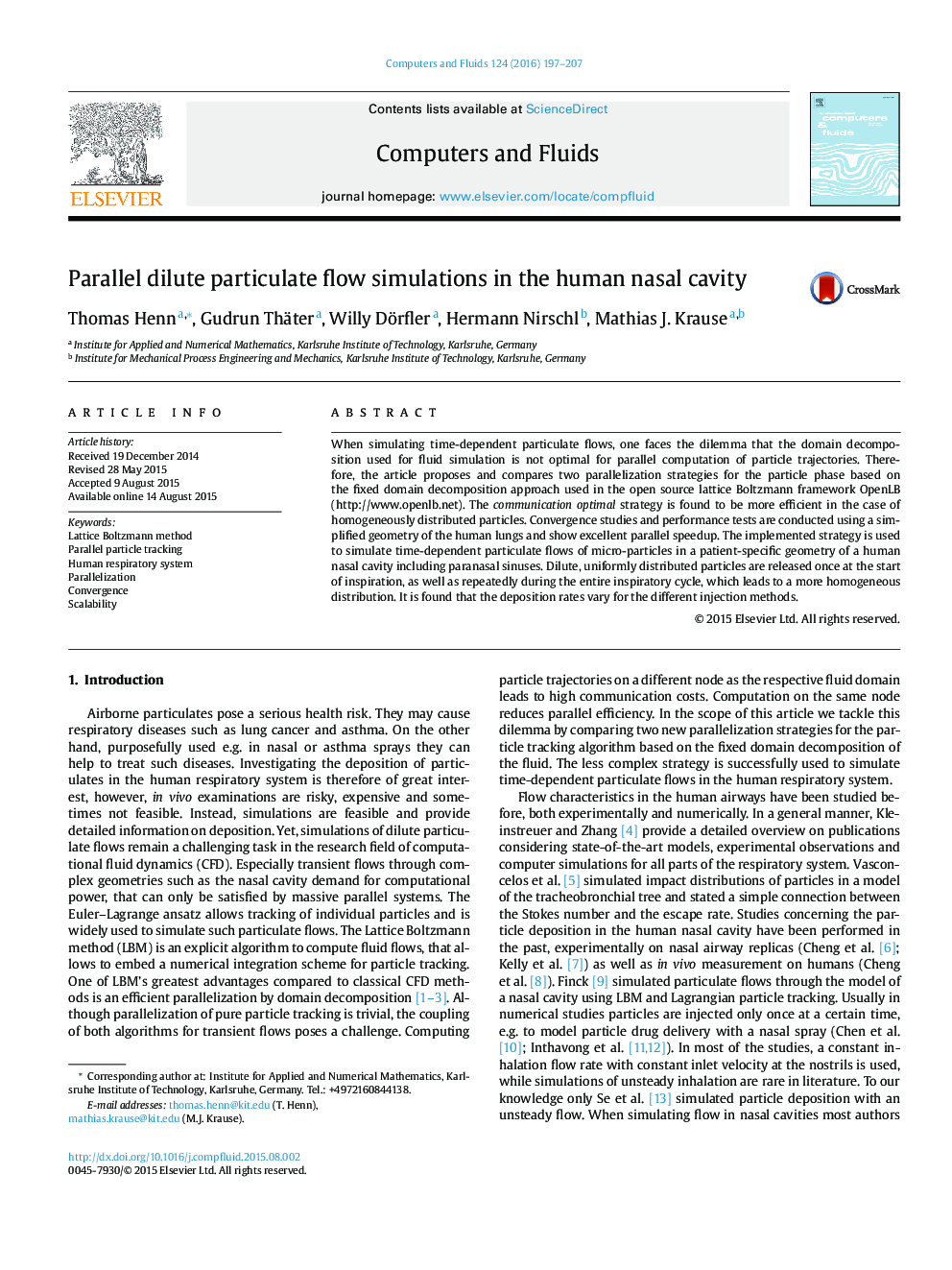| Article ID | Journal | Published Year | Pages | File Type |
|---|---|---|---|---|
| 768099 | Computers & Fluids | 2016 | 11 Pages |
•Numerical investigation of particle deposition in the human nasal cavity.•Derivation of two parallel strategies of particulate fluid flow simulations.•Analysis of two parallel strategies of particulate fluid flow simulations.•Validation of the Euler–Lagrange approach by a detailed convergence study.•Validation for a lung geometry by comparison with results from the literature.
When simulating time-dependent particulate flows, one faces the dilemma that the domain decomposition used for fluid simulation is not optimal for parallel computation of particle trajectories. Therefore, the article proposes and compares two parallelization strategies for the particle phase based on the fixed domain decomposition approach used in the open source lattice Boltzmann framework OpenLB (http://www.openlb.net). The communication optimal strategy is found to be more efficient in the case of homogeneously distributed particles. Convergence studies and performance tests are conducted using a simplified geometry of the human lungs and show excellent parallel speedup. The implemented strategy is used to simulate time-dependent particulate flows of micro-particles in a patient-specific geometry of a human nasal cavity including paranasal sinuses. Dilute, uniformly distributed particles are released once at the start of inspiration, as well as repeatedly during the entire inspiratory cycle, which leads to a more homogeneous distribution. It is found that the deposition rates vary for the different injection methods.
